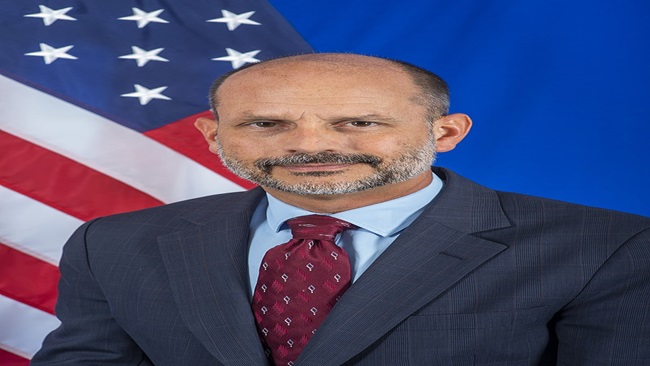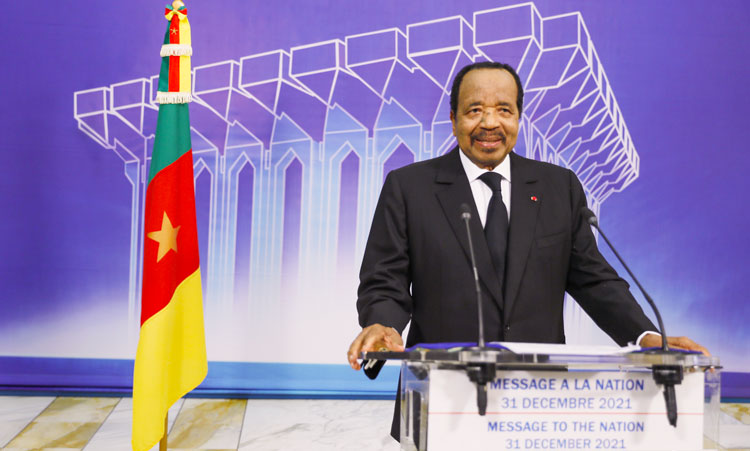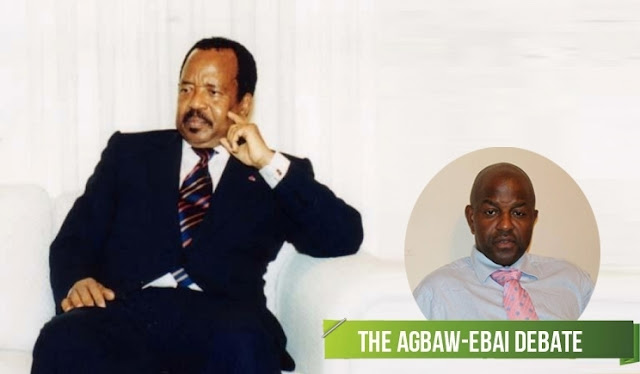Categories
Recent Posts
- Yaoundé relies on short-term debt to cover budget needs in 2024
- Southwesterners form SWELA Chapter in Belgium to strengthen bonds
- Pope greets crowds at Vatican in first appearance since leaving hospital
- Yaoundé: Influential ex-defense minister Mebe Ngo’o jailed for corruption
- Football: De Bruyne to leave Man City at end of the season
Archives
- April 2025
- March 2025
- February 2025
- January 2025
- December 2024
- November 2024
- October 2024
- September 2024
- August 2024
- July 2024
- June 2024
- May 2024
- April 2024
- March 2024
- February 2024
- January 2024
- December 2023
- November 2023
- October 2023
- September 2023
- August 2023
- July 2023
- June 2023
- May 2023
- April 2023
- March 2023
- February 2023
- January 2023
- December 2022
- November 2022
- October 2022
- September 2022
- August 2022
- July 2022
- June 2022
- May 2022
- April 2022
- March 2022
- February 2022
- January 2022
- December 2021
- November 2021
- October 2021
- September 2021
- August 2021
- July 2021
- June 2021
- May 2021
- April 2021
- March 2021
- February 2021
- January 2021
- December 2020
- November 2020
- October 2020
- September 2020
- August 2020
- July 2020
- June 2020
- May 2020
- April 2020
- March 2020
- February 2020
- January 2020
- December 2019
- November 2019
- October 2019
- September 2019
- August 2019
- July 2019
- June 2019
- May 2019
- April 2019
- March 2019
- February 2019
- January 2019
- December 2018
- November 2018
- October 2018
- September 2018
- August 2018
- July 2018
- June 2018
- May 2018
- April 2018
- March 2018
- February 2018
- January 2018
- December 2017
- November 2017
- October 2017
- September 2017
- August 2017
- July 2017
- June 2017
- May 2017
- April 2017
- March 2017
- February 2017
- January 2017
- December 2016
- November 2016
- October 2016
- September 2016
- August 2016
- July 2016
- June 2016
Featured
 Prosecution of journalists in Cameroon: European Parliament says enough red flags have been ignored
Prosecution of journalists in Cameroon: European Parliament says enough red flags have been ignored  1982-2025: How long will Biya hang on?
1982-2025: How long will Biya hang on?  How Biya and Archbishop Nkea protected the sanctity of the family in Cameroon
How Biya and Archbishop Nkea protected the sanctity of the family in Cameroon  October Presidential Election: Will 92-year-old Biya be re-elected?
October Presidential Election: Will 92-year-old Biya be re-elected?  Why is Biya seeking re-election?
Why is Biya seeking re-election?
Most Commented Posts
 4 Anglophone detainees killed in Yaounde
4 Anglophone detainees killed in Yaounde
18 comments Chantal Biya says she will return to Cameroon if General Ivo Yenwo, Martin Belinga Eboutou and Ferdinand Ngoh Ngoh are sacked
Chantal Biya says she will return to Cameroon if General Ivo Yenwo, Martin Belinga Eboutou and Ferdinand Ngoh Ngoh are sacked
13 comments The Anglophone Problem – When Facts don’t Lie
The Anglophone Problem – When Facts don’t Lie
12 comments Anglophone Nationalism: Barrister Eyambe says “hidden plans are at work”
Anglophone Nationalism: Barrister Eyambe says “hidden plans are at work”
12 comments Largest wave of arrest by BIR in Bamenda
Largest wave of arrest by BIR in Bamenda
10 comments
Latest Tweets
Featured
-

Yaoundé relies on short-term debt to cover budget needs in 2024
-

Southwesterners form SWELA Chapter in Belgium to strengthen bonds
-

Pope greets crowds at Vatican in first appearance since leaving hospital
-

Yaoundé: Influential ex-defense minister Mebe Ngo’o jailed for corruption
-

Football: De Bruyne to leave Man City at end of the season
-

Southern Cameroons Crisis: Brit missionary and assistant abducted, church begs for their release
-

Prosecution of journalists in Cameroon: European Parliament says enough red flags have been ignored
© Cameroon Concord News 2025
14, August 2023
What Difference Does Jesus Christ Make? (Part Three) 0
by soter • Headline News, Religion, World
We ended our previous section by pointing out that human brokenness, or existential wretchedness, could often time serve as the raw material thanks to which the need for God enters into the drama of human existence. As disheartening as the state of sin is, when we have the courage to turn to God, human sinfulness becomes a graced opportunity of encounter from which good fruits, such as patience with the faults of others; tolerance; a more understanding heart; a more God-like charity, the discovery of my dependence on God; et cetera, could ensure. Additionally, we pointed out that even from the midst of human misery, suffering and sin, God is never out of the picture, for the grace of the light of faith is enriched by the grace of the light of glory, albeit that, like Moses, we can only see God’s back and not his Face – that which we would have really loved to see!
As we intimated, the request for Moses to see the Face of God persisted throughout Israel’s history: It is your Face O Lord that I seek, do not hide your Face from me (Psalm 27:8-9). Moses’ quest remained unfulfilled and was kept as a promise of hope, hope for a future in which the greatest longing of the human heart would ultimately be met, in spite of human brokenness. In the Christian tradition, this sense of hope borne from the longing for God, what St Benedict referred to as the Quaerere Deum, has often resulted opening up a new perspective in terms of how we see the human being and the drama of sin in human existence. Augustine of Hippo captured this sense of hope borne from the midst of human sinfulness when he declares in his characteristic quotable fashion: every saint had a past; and every sinner has a future. In effect, the silver lining in my sinfulness is the hope that I can become different. I can become better. I can start all over at any point in time. The Lord is continuously calling me and never gives up on me to come work in his vineyard (Matthew 20:1-16). In the final analysis, Christian hope reminds me that even my best can become better in Christ Jesus the Lord.
Returning to the figure of Moses, in Deuteronomy 18:15, we read: A prophet like me will the Lord, your God, raise up for you from among your own kindred; that is the one to whom you shall listen. And again, we read: I will raise up for them a prophet like you from among their kindred and will put my words into the mouth of the prophet; the prophet shall tell them all that I command. (Deuteronomy 18:17). As Ratzinger explains, a curious melancholy hangs over the conclusion of the Book of Deuteronomy: “The promise concerning ‘a prophet like me’ has not yet been fulfilled. And it now becomes clear that these words do not refer simply to the institution of prophecy, which in fact already existed, but to something different and far greater: the announcement of a new Moses. It had become evident that taking possession of the land in Palestine did not constitute the chosen people’s entry into salvation; that Israel was still awaiting its real liberation; that an even more radical kind of exodus was necessary, one that called for a new Moses.” (Ratzinger, Jesus of Nazareth, Vol. 1, p. 3). In effect, what is outstanding and enduring about the figure of Moses are not the mighty deeds performed, curial as these were to Israel’s liberation. What serves as the capstone of the life of Moses was him pointing to the face of God as that which ultimately meets the desires of the human heart, that which finally resolves the wedge between willing and willed, between desire and fulfillment, as explained by Maurice Blondel in his philosophy of human action.
In this light, the Deuteronomistic Promise thereby opens the door to the leitmotif of a new Moses that would finally unveil the Face of God to the world, bringing to realization the greatest longing of the human heart. This is the unfinished business of Moses that the new Moses had to accomplish. As Ratzinger again explains, “Israel is allowed to hope for a new Moses, who has yet to appear, but who will be raised up at the appropriate hour. And the characteristic of this ‘prophet’ will be that he converses with God face-to-face, as a friend does with a friend. His distinguishing note will be his immediate relation with God, which enables him to communicate God’s will and word firsthand and unadulterated. And that is the saving intervention which Israel – indeed, the whole of humanity – is waiting for.” (Ratzinger/Benedict XVI, Jesus of Nazareth, Vol. I, 5). In this life, Moses, and together with him the faith of Israel, can only go so far, as far as seeing the back of God (Exodus 33:23). But as we pointed out in part two of this series, the human heart is not contented with the back of God. The human heart wants more. And herein arises the need for a new Moses.
This figure of a new Moses, thereby, sets the stage for that is genuinely novel and consummating, for the meeting of the more of the human heart. Anything less would not satisfy the greatest aspirations of the human heart. In this light, the new Moses must therefore be granted what was denied the first, if this new Moses is to resolve the impasse that characterizes human existence, the distraught that continues to mark human life. The new Moses must therefore be greater than the first Moses, capable of going beyond the back of God to the face of God. As Ratzinger further teaches, “this is the context in which we need to read the conclusion of the Prologue to John’s Gospel: ‘No one has ever seen God; it is the only Son, who is nearest to the Father’s heart, who has made him known’ (John 1:18). It is in Jesus that the promise of the new prophet is fulfilled. What was true of Moses only in fragmentary form has now been fully realized in the person of Jesus: He lives before the face of God, not just as a friend, but as a Son; he lives in the most intimate unity with the Father” (Ratzinger/Benedict XVI, Jesus of Nazareth, 6).
At this point, it becomes obvious that the event of the Transfiguration as recorded in Mathew 17:1-13, take on a much more profound meaning for the Christian. While it is true that Jesus obviously wanted to strengthen the resolve of the apostles before the scandal of the Passion, it is likewise true, and even more so, that with the event of the Transfiguration especially when read via Jewish hermeneutics as embodied in the figures of Moses and Elijah, we are dealing with the zenith of Israel’s religious struggle, and hopefully, ours as well. (To be continued).
By Maurice Agbaw-Ebai